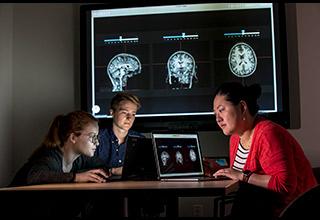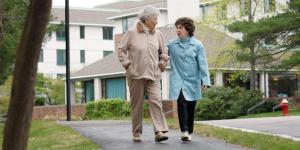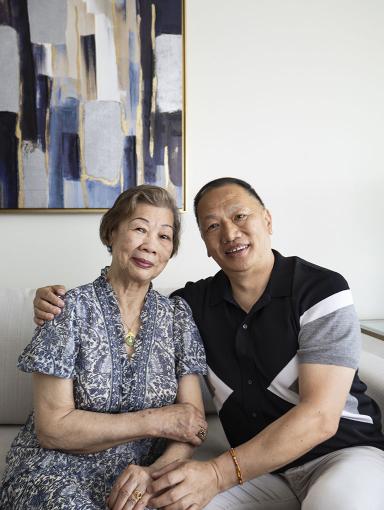Making Hospitals Safer for Older Patients
New study shows physical activity in the hospital can improve outcomes.

In 1999, I launched the Hospital Elder Life Program (HELP) designed to prevent delirium and hospital-related complications, and one of the major interventions was improving hospital mobility. The program was implemented in over 200 hospitals worldwide, and definitely contributed to improving mobility during its first 10 years. However, in 2009 we noticed that many HELP programs were no longer able to mobilize patients, and this caused great concern. While it may seem intuitive to keep older patients in bed while they recover from an illness or surgery, much research actually shows that the opposite is true: staying in bed hampers recovery.
According to estimates in 2009 and 2013, hospitalized seniors spent more than 95 percent of their time in a bed or chair. Studies show that this practice increases the risk for injurious falls, delirium, aspiration pneumonia, pressure ulcers, functional decline, prolonged length of hospital stay, readmissions, institutionalization, and mortality. In all patients, getting up and moving as soon as possible promotes faster recovery and earlier discharge. Without mobility, a hospital stay can lead to decline in an older patient's mental and physical health, slowing down their long-term recovery, well-being, and quality of life.
So how did we get here?
Fall prevention turns out to be the driving force behind this change. In 2008, the Centers for Medicare & Medicaid Services enacted new payment provisions that would no longer reimburse hospitals for some conditions developing in the hospital, including falls with injury. To reduce the risk of falls, many hospitals responded by not allowing patients to walk or get out of bed on their own, and to routinely use bed and chair alarms. A loud sound goes off if a patient fitted with an alarm attempts to get out of bed or a chair, which is supposed to summon help.
Seems to makes sense – but not so fast. Large randomized clinical trials have clearly demonstrated bed and chair alarms don’t reduce falls. But they do keep patients from standing up and walking. Remember those risks I mentioned earlier? Lack of mobility equals poor patient outcomes in many cases.
Clearly change is needed. But to paraphrase a familiar saying: you can’t keep doing the same thing over and over again, and expect different results. This means a fundamental change is needed in hospital culture. And that means everyone from administrative leadership to frontline caregivers must be on board. So now the question becomes, how do you change a whole hospital’s culture surrounding fall prevention and mobility?
As part of a 2016–2017 Health and Aging Policy Fellowship, I worked with the Center for Medicare & Medicaid Innovation (CMMI) to develop a new care delivery model that would encourage patient mobility and reduce bed and chair alarm use in hospitals participating in CMMI’s bundled payment programs. Toward that end, I worked with a dedicated team at CMMI to develop a Mobility Action Group (MACT) Change Package that could serve as a catalyst for change by providing a conceptual framework, roadmap, and step-by-step guide to help hospitals set up mobility teams set and a mobility program to meet their mobilization goals. Forty eligible hospitals worked to implement the model.
This is how MACT Change Package works.
| Goal | Action | Tactic |
|
Create engagement in mobility culture |
Get buy-in and engagement from patients and their families. Get buy-in from executive, clinical and non-clinical staff. |
Communicate expectations for mobilization to patients and families. Enlist a disciplinary team to design the mobility program. |
|
Access and plan for mobility |
Assess function and mobility throughout patient’s hospital stay. Include the mobility plan in the patient’s care plan.
|
Assess patient mobility throughout their hospital stay and adjust as appropriate. Set a walking distance goal with a target to walk three times a day. Justify all bed rest orders with walking as the default. |
|
Provide early mobilization with safe approaches |
Have appropriate assistive devices for all patients.
Transition falls team to mobility team. |
Train and demonstrate safe mobility approaches for patients and staff and body mechanics for nurses, Aides, sitters, PT techs, volunteers, “ambulators”
Always consider maintaining mobility in all corrective actions for fall prevention. |
|
Minimize immobilizing devices |
Reduce/minimize bed and chair alarm use.
Daily patient mobility scan to identify mobility barriers. |
Develop a system of hourly rounding and rapid response to call bells.
|
The data we collected from participating hospitals in our culture change initiative is promising. The majority of hospitals (76 percent) reported successful implementation of mobility programs, with most reporting that it is highly likely their mobility program will continue. Hospitals were able to increase the proportion of older adults walking at least three times a day and decrease the proportion of them on bed or chair alarms.
While additional study is needed to determine if this approach can improve patient outcomes such as decreased falls, functional decline, and readmissions, this initiative demonstrates that emphasizing system-wide change through a flexible approach can catalyze a culture of mobility in hospitals and improve care of older adults. We showed that the culture change can be done; now we hope that hospitals will continue this effort.
Blog Topics
Learn More
Research on Aging
At the Hinda and Arthur Marcus Institute for Aging Research, Harvard Medical School-affiliated researchers are working to uncover answers to some of the most pressing challenges of aging.





